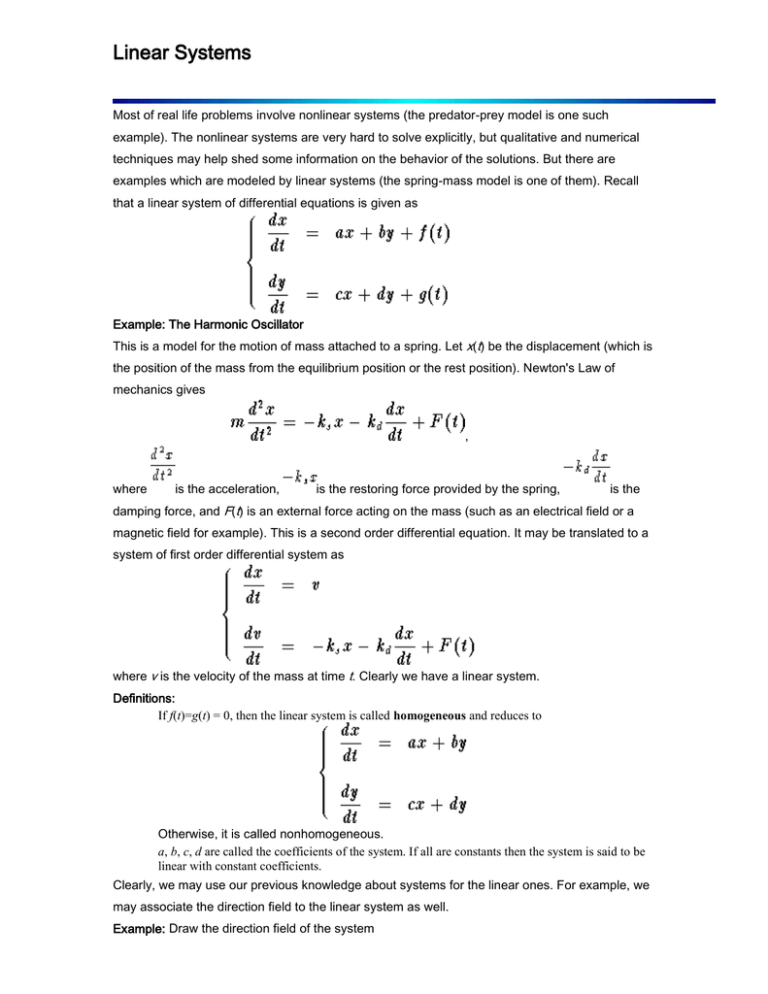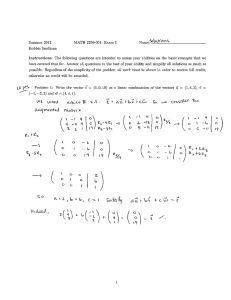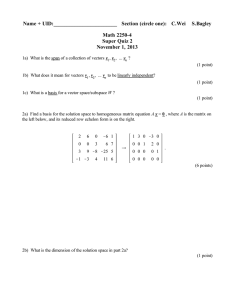Linear Systems
advertisement

Linear Systems Most of real life problems involve nonlinear systems (the predator-prey model is one such example). The nonlinear systems are very hard to solve explicitly, but qualitative and numerical techniques may help shed some information on the behavior of the solutions. But there are examples which are modeled by linear systems (the spring-mass model is one of them). Recall that a linear system of differential equations is given as Example: The Harmonic Oscillator This is a model for the motion of mass attached to a spring. Let x(t) be the displacement (which is the position of the mass from the equilibrium position or the rest position). Newton's Law of mechanics gives , where is the acceleration, is the restoring force provided by the spring, is the damping force, and F(t) is an external force acting on the mass (such as an electrical field or a magnetic field for example). This is a second order differential equation. It may be translated to a system of first order differential system as where v is the velocity of the mass at time t. Clearly we have a linear system. Definitions: If f(t)=g(t) = 0, then the linear system is called homogeneous and reduces to Otherwise, it is called nonhomogeneous. a, b, c, d are called the coefficients of the system. If all are constants then the system is said to be linear with constant coefficients. Clearly, we may use our previous knowledge about systems for the linear ones. For example, we may associate the direction field to the linear system as well. Example: Draw the direction field of the system as well as some solutions. Answer. Below is the direction field of the system. Red vectors symbolize "long" vectors, light blue vectors symbolize slow motion. The second picture also shows some typical solutions. The initial value conditions are indicated by dots.


